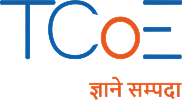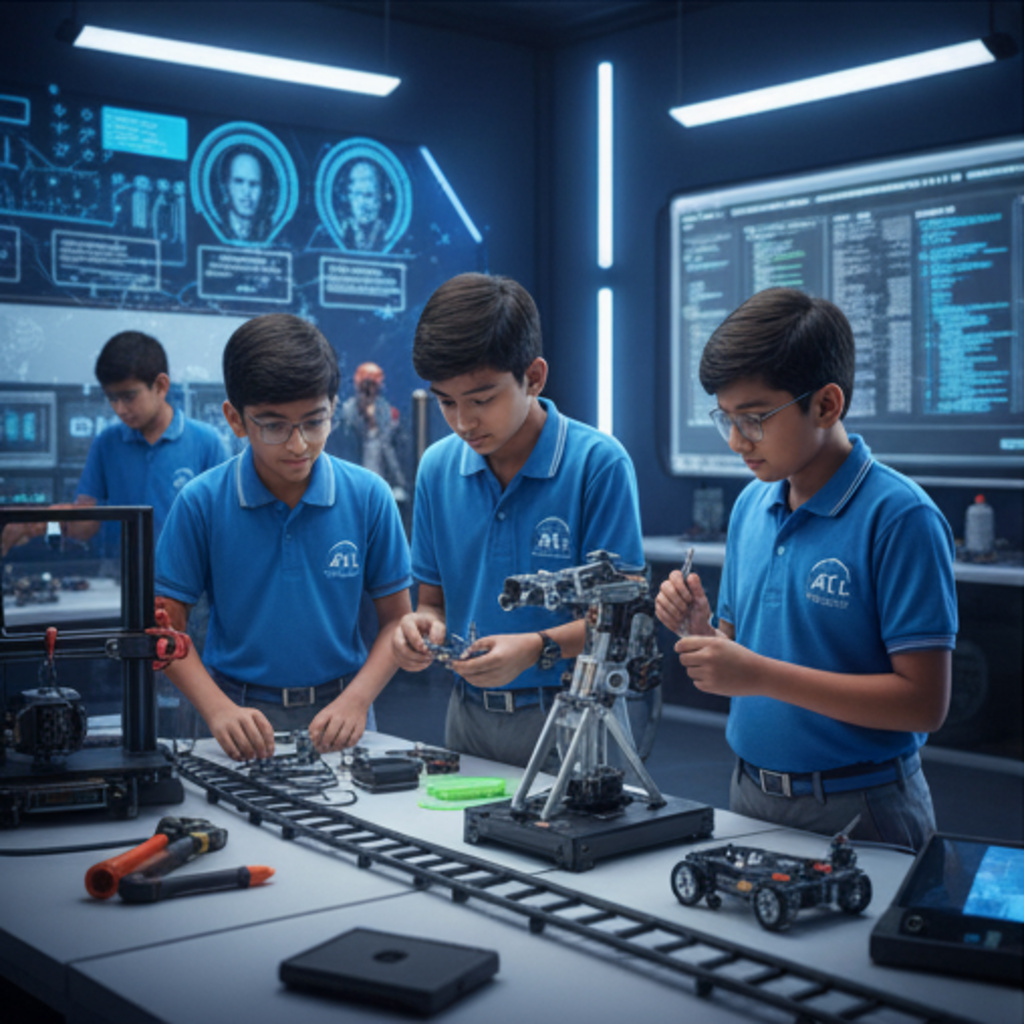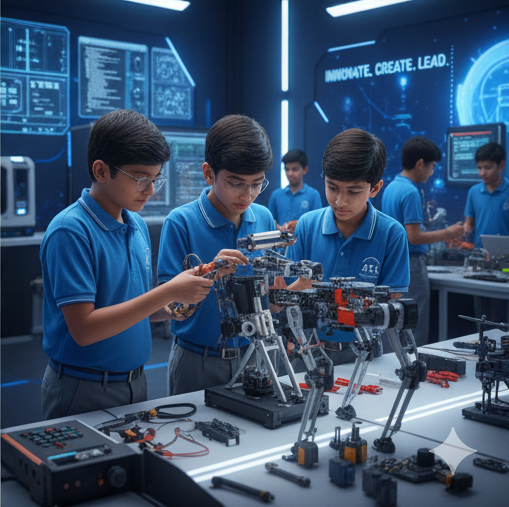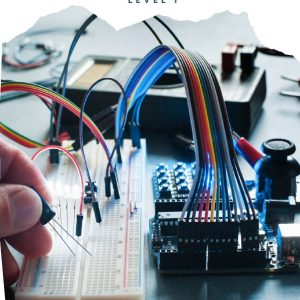ATL Level-3 (Advanced)
Atal Tinkering Labs is a workspace where young minds can give shape to their ideas through hands on do-it-yourself mode; and learn innovation skills. Young children will get a chance to work with tools and equipment to understand the concepts of STEM (Science, Technology, Engineering and Math). ATL would contain educational and learning ‘do it yourself’ kits and equipment on – science, electronics, robotics, open-source microcontroller boards, sensors and 3D printers and computers. Other desirable facilities include meeting rooms and video conferencing facility.
- 72 Hours (2 hours/day x 6 days/week x 6 weeks) OR at your own pace
- Hindi, English
- Learn & Get Certified
- Basic & Intermediate
- Hands-On Training
About this course
ATL Level-3 Course comprises of 5 modules namely, Electronics, IoT, 3D Design & Printing, Wood Working and Design & Entrepreneurial Thinking. All the 5 modules are further divided into 17 sessions. The duration of each session is 60 min.
- Fees: ₹2500 ₹2000 (incl. GST) (Excluding tools & equipment cost)
- Certification: TCoE
- Duration: 72 Hours (2 hours/day x 6 days/week x 6 weeks) OR at your own pace
What you'll learn
After this course you will be able to:
- Turn ideas into reality by brainstorming, modelling and prototyping.
- Inculcate innovative and entrepreneurial mind-set through Design thinking and Hands-on Learning.
- Identify and research problems in their community and beyond, generate relevant and creative solutions, and develop sustainability plans for their solutions.
- Identify and self-learn for dignified career opportunities based on their skills and interests, particularly in STEM or entrepreneurship.
- Develop basic knowledge in electrical and mechanical engineering principles.
- Develop skills of using hand tools to construct a prototype of an engineering design.
Course Content
Why take this course?
This advanced course is designed to transform learners into confident innovators and problem solvers through high-level tinkering and project-based learning. You will work on complex, real-world challenges by integrating robotics, electronics, coding, IoT, and design thinking to develop advanced prototypes and solutions. Aligned with the Atal Innovation Mission, the course nurtures innovation, entrepreneurship, and critical thinking skills. It is ideal for students aiming to excel in national and international competitions, pursue advanced STEM education, and develop future-ready skills for technology-driven careers.
How to use online TCoE platform?
Tools and Equipment required
National Skill Development Mission
Module-1: Basic Electronics
1. Ohm’s Law & How to use a Multimeter
2. 7 Segment Display
3. PCB Etching
4. Sensors and Actuators using Arduino
Module-2: Internet of Things
1. ESP32 Basics
2. Interfacing LDR with ESP32
3. Control an LED using Mobile App
4. IoT Plant Monitoring using ESP32
Module-3: 3D Design & Printing
1. Design a Spanner and 3D Print it
2. Design a Walking Robot and 3D Print it
Module-4: Wood Working
1. Introduction to Woodworking
2. Make your own Birdhouse
Module-5: Design and Entrepreneurial Thinking
1. Sustainable Home Model
2. Final Project: Sustainable Village Model
ENROLL TODAY & GET 30% OFF ON ALL COURSES
Your Future Can’t Wait, Enroll Now and Save 30% On All Courses. Hurry Up Offer valid Till Diwali
Our Related Courses
See what our students have to say
With over a decade of experience, our mission is to produce future-ready skilled resources.
Battery Management and Optimization
This topic focuses on understanding the different types of e-bicycle batteries, their charging cycles, maintenance, and troubleshooting. Learners will explore techniques to maximize battery life, improve range, and ensure safe operation. Mastering battery management is essential for efficient performance, cost savings, and the overall reliability of electric bicycles.
Job Opportunities
Here are some interesting job opportunities after completing the ATL Level-3 course:
Embedded Systems Developer
– Design and program complex hardware-software systems using microcontrollers like Arduino, Raspberry Pi, or ESP32 for real-world applications.IoT Application Engineer
– Build and manage advanced Internet of Things (IoT) projects such as smart homes, wearable tech, or industrial automation systems.Robotics Engineer / Automation Developer
– Develop intelligent robots and automated systems integrating sensors, AI algorithms, and control logic for use in education, research, or industry.AI & Machine Learning Assistant
– Apply foundational AI and ML concepts to projects involving data sensing, automation, and predictive control.Product Prototyping Specialist
– Transform innovative ideas into functional prototypes using 3D printing, CAD modeling, and rapid fabrication tools.Innovation Lab Manager / Mentor
– Oversee innovation spaces or Atal Tinkering Labs, guiding students in executing advanced STEM and entrepreneurial projects.Tech Startup Co-founder / Innovator
– Use your advanced design thinking and product development skills to launch startups solving real-world problems with technology-driven solutions.- Research Intern / Project Developer
– Work in research labs or institutions on innovation-focused projects involving robotics, automation, or smart systems.
Frequently asked questions
What is the main focus of this course?
The Level-3 course focuses on advanced innovation and technology integration, allowing students to work on projects involving IoT, robotics, AI, and embedded systems. It helps learners turn creative ideas into real, working prototypes.
How is Level-3 different from Levels 1 and 2?
While Levels 1 and 2 cover basic tinkering and intermediate prototyping, Level-3 dives deeper into smart technologies, coding, and product innovation, helping students think like inventors and problem-solvers ready for real-world challenges.
Do I need prior experience in electronics or coding to join Level-3?
Basic knowledge of electronics and microcontrollers (from earlier ATL levels) is helpful, but not mandatory. The course includes step-by-step learning with hands-on experiments to make advanced concepts easy to grasp.
What kind of projects will I work on in this course?
Students build projects such as smart irrigation systems, autonomous robots, AI-based sensors, or home automation devices, applying real-world innovation to solve community problems.
Will I learn about Artificial Intelligence (AI) in this course?
Yes! The course introduces AI and Machine Learning concepts and shows how they can be applied in IoT and robotics projects to make systems smarter and more efficient.





